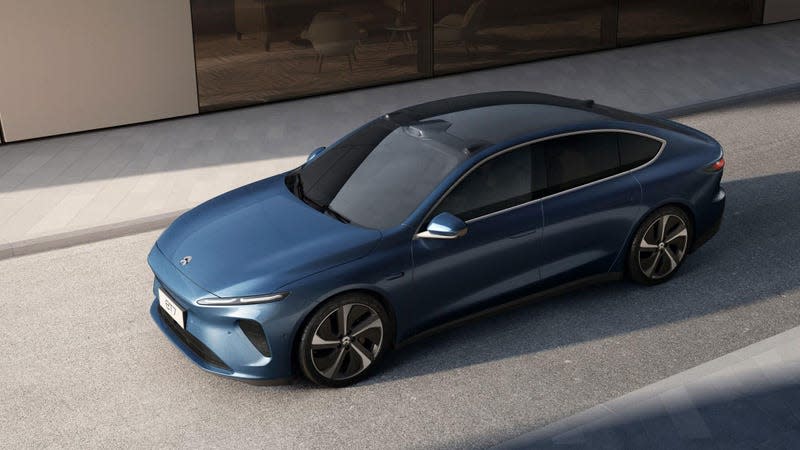China's Nio Will Sell Next-Generation EVs in the U.S.

If you’re not familiar with Nio, that’s OK. It can be hard to keep up with all the electric startups that have popped up over the years, especially in China. But Nio’s been around since 2014 (back when it was known as NextEV) and currently has a lineup of six different models. And soon, Nio plans to enter the U.S. market.
There have been rumors for years that Nio would try to sell its cars in the U.S., and considering how big of a country we are, it seemed inevitable as long as Nio didn’t go out of business. But now CarNewsChina reports that the CEO says it’s definitely happening.
Read more
Speaking to employees at a company event, co-founder and CEO William Li said he plans to sell the next generation of Nio EVs in the U.S. He also confirmed that Nio is still on track to produce its own chips and batteries starting in 2024. He reportedly believes that’s a necessity if the company is ever going to become profitable.
Assuming that plan comes to fruition, Li said the cost savings would be significant. Self-manufactured batteries would save them eight percent over buying one from somewhere else, and in-house chips would be 10 percent cheaper. He also said his goal is to break even in 2024 and be profitable going forward.
Outside of China, Nio has already expanded to a handful of countries in Europe. The first EU countries for Nio sales include Germany, Netherlands, Sweden, and Denmark, but the company has plans to continue expanding that list in addition to joining the U.S. market.
To make that happen, Nio’s rapidly expanded its workforce. It now employs about 30,000 people, which is more than double the number it had last year. With no official date announced for U.S. sales yet, it’s understandable that some will remain skeptical that it will ever happen. But Nio at least appears to be a serious company that’s got a lot more than just China in its sights.
More from Jalopnik
Sign up for Jalopnik's Newsletter. For the latest news, Facebook, Twitter and Instagram.

